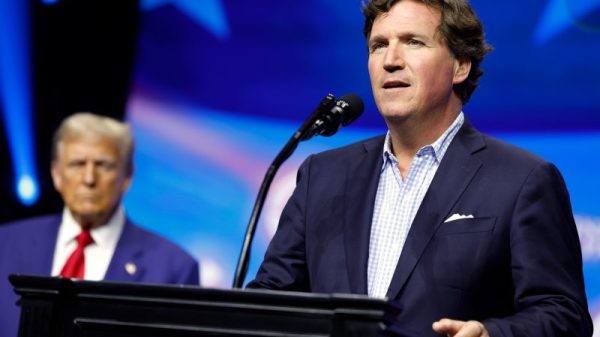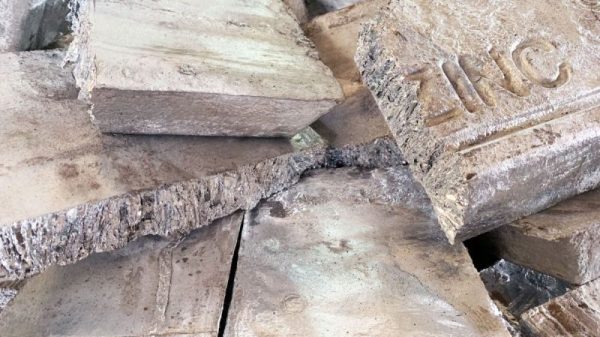The last 48 hours in the Middle East – in which Israel killed Hezbollah leader Hassan Nasrallah and continued to bombard the Iran-backed group across Lebanon – have once more ratcheted up fears that this long-running conflict could spiral into a wider regional war.
Nasrallah’s killing, in a huge set of Israeli airstrikes on his underground headquarters in Beirut on Friday, marks a significant escalation in the conflict between Israel and the Lebanon-based militant group, which has been firing on Israel since the start of its war against Hamas in Gaza.
It is also the latest in a string of major blows to Hezbollah, which has now lost multiple commanders and was already reeling after pagers and walkie-talkies owned by its members exploded earlier this month, killing dozens and maiming thousands.
Israel has warned that a “new era” of war was beginning with its “center of gravity” moving north, in a reference to the Lebanon border. One of its stated war aims is to return tens of thousands of its own civilians displaced by cross-border fighting.
Hundreds of thousands have been displaced within Lebanon due to the recent fighting, while more than a thousand have been killed since the airstrikes escalated last week, according to Lebanese government officials.
Israel has raised the possibility of a ground incursion into Lebanon, which, if undertaken, would be the fourth Israeli invasion of the country in the past 50 years.
Hezbollah has vowed that it will “continue its fight to confront the enemy,” while Iran, which backs the group as part of its network of regional proxies, has given an assurance of its solidarity.
Here’s what we know so far and where things might go next.
Escalating conflict
Israel has pounded what it says are Hezbollah targets in the Lebanese capital of Beirut and elsewhere in the country on Friday and Saturday, including the attack on the capital’s southern suburbs that killed Nasrallah.
Some of the strikes have come in densely populated areas, flattening residential buildings. Israel has said Hezbollah stores weapons in civilian buildings, which the group denies, and accuses Hezbollah of using residents as “human shields.”
Lebanese civilians say they cannot heed warnings from Israel’s military to avoid places where Hezbollah is operating, because the group is highly secretive. The warnings also often come just minutes before a building is struck.
Residents from Beirut’s southern suburbs have been fleeing to escape Israeli bombardment, with many seen sleeping in public places with no space left in makeshift shelters.
The latest attacks come after Israeli Prime Minister Benjamin Netanyahu brushed off a ceasefire proposal brokered by the United States and France that called for a 21-day pause in fighting across the Israel-Lebanon border.
The White House has said it had “no knowledge of or participation in” Israel’s Friday attack on Beirut, with US President Joe Biden describing Nasrallah’s death as a “measure of justice for his many victims,” including Americans, while calling for de-escalation in conflicts across the Middle East.
Earlier Saturday, Israel Defense Forces spokesman Peter Lerner said the military was preparing for the possibility of a ground incursion, but it was only one option being considered.
What will Hezbollah – or Iran – do?
In the wake of Nasrallah’s killing – and the attack on pagers and walkie-talkies – Hezbollah’s remaining leaders are likely to be assessing how to meet, communicate and respond.
Some of the factors that will impact that response – such as the extent to which Israeli strikes have reduced the group’s munitions – remain unknown. But analysts say the setbacks faced by the group are unlikely to leave it completely weakened.
“Hezbollah has taken the biggest blow to its military infrastructure since its inception,” said Hanin Ghaddar, a senior fellow at the Washington Institute and author of “Hezbollahland.”
The group, however, still retains skilled commanders, as well as many of its most powerful assets – including precision-guided missiles and long-range missiles that could inflict significant damage to Israel’s military and civilian infrastructure, said Ghaddar.
So far, there has not been a major barrage of rockets from Hezbollah that has caused significant, known damage to Israeli targets. And even in the wake of Nasrallah’s killing the group has yet to launch a major retaliation at the level that could see Israel’s Iron Dome air defense system overwhelmed and its power grid affected.
But the latest development raises the potential for a shift.
Another key question is the extent to which Iran could get involved.
The state has appeared wary of moving into direct conflict with Israel, even as their long-standing shadow war has been pushed further into the open in recent months – and observers say direct Iranian retaliation could also draw the US further into the conflict.
A senior US official said the US believes Iran will intervene in the conflict if they judge that they are about to “lose” Hezbollah. The combined effects of Israel’s operations against Hezbollah had already taken hundreds of fighters off the battlefield, according to that official and another person familiar with the intelligence.
Iran’s embassy in Lebanon in a social media post Friday called Nasrallah’s killing a “serious escalation that changes the rules of the game,” and said its perpetrator “will be punished and disciplined appropriately.”
The Iranian envoy to the United Nations on Saturday also requested an emergency meeting of the Security Council to “condemn Israel’s actions in the strongest possible terms.”
But the space for diplomacy seems limited, especially as months of work on a ceasefire deal for the war in Gaza have seen little lasting progress.
“At best, it’s a question of deterrence, management and maybe, if Hezbollah, the Israelis and the Iranians are open to it… agreements that will contain conflict,” he said.



























